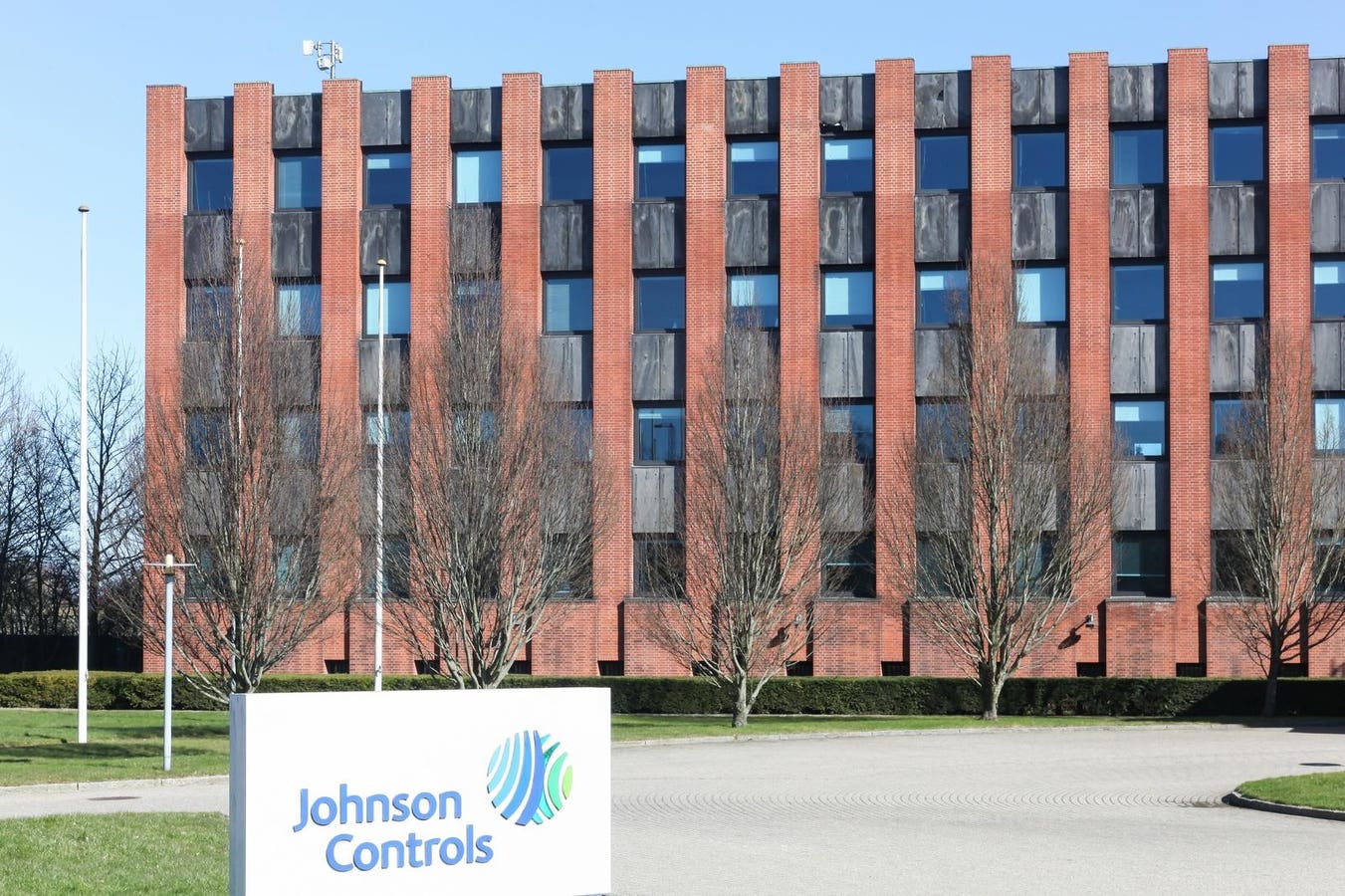A Johnson Controls office building in Denmark
getty
Johnson Controls, the 140-year-old leader in building technologies has thoroughly modernized such that it is able to drive remarkable value with the use of technology. With annual revenues exceeding $23 billion and a mission centered on smart, healthy and sustainable buildings, the company is leaning heavily into artificial intelligence and data-driven innovation. Earlier this year, Vijay Sankaran became the firm’s Chief Digital and Information Officer (CDIO) after previously serving as Chief Technology Officer and Head of Digital Solutions. “Ultimately, my role is to digitize Johnson Controls end-to-end,” Sankaran explained. “That means transforming customer experiences, empowering our field service personnel and streamlining operations inside our factories all powered by data, AI and software.”
From Legacy Systems to OpenBlue
When Sankaran took responsibility for Johnson Controls’ digital solutions in 2021, the portfolio was fragmented with disparate data and bespoke projects for individual customers. In just three years, his team has built a cohesive platform called OpenBlue, which unifies solutions under a single umbrella. Acquisitions like FM Systems, an intelligent workplace management tool, have further expanded the company’s capabilities. Today, OpenBlue delivers value through energy optimization, sustainability compliance, equipment performance and intelligent workplace solutions while also venturing into new areas such as healthcare optimization and worker safety.
“We’ve gone from stovepipes of HVAC, fire and security systems to thinking of buildings as holistic platforms,” Sankaran noted. “It’s like creating an ERP or Salesforce for buildings—one view, one data platform, unlocking entirely new value streams.”
Smart, Healthy, Sustainable
Sankaran breaks down Johnson Controls’ mission into three pillars:
- Smart: Integrating historically siloed building systems into a single digital view, enabling real-time insights and operational efficiency.
- Healthy: Using sensors and HVAC optimization to improve air quality and comfort which directly correlates with higher employee productivity.
- Sustainable: Driving energy efficiency and reducing Scope 1 and 2 emissions by aligning equipment utilization with external factors like weather and regulatory requirements.
“In every case, digital capabilities are at the center,” Sankaran said. “We’re using data not just to measure but to recommend and even automate improvements in real time.”
AI at the Core of Transformation
Artificial intelligence is central to Johnson Controls’ strategy. The company has long used machine learning to detect faults and predict equipment failures. Now, with generative and agentic AI, Sankaran envisions a more proactive, personalized future.
“Generative AI lets us translate complex data into narratives for customers, whether that’s explaining fault codes or recommending optimizations,” he said. “The next phase
Vijay Sankaran of Johnson Controls
JCI
is agentic AI, where we assemble end-to-end workflows that act on behalf of building managers. Instead of dashboards, customers can simply ask questions and get actionable insights immediately.” This shift, Sankaran argued, will redefine how buildings are managed, helping the company to take advantage of opportunities in a proactive, on-demand world.
Practicing What They Preach
Johnson Controls isn’t just deploying these innovations for customers; it uses them internally as well. For example, the company’s chillers, a critical asset in booming industries like data centers, are now monitored digitally for early signs of distress. “If a chiller is showing issues, we can schedule preventative maintenance during off-peak hours and send technicians with the right parts,” Sankaran explained. “It avoids costly disruptions for customers and strengthens our own service relationships. In an analog world, you simply can’t deliver that kind of value.”
Insights on the Future of Work
With data from millions of connected building sensors, Sankaran has a unique vantage point on workplace trends. His analysis suggests a gradual return to corporate offices, but with important caveats. “It’s highly contextual,” he emphasized. “Industries like financial services are more centralized and seeing stronger returns to the office. Others, especially acquisitive or distributed organizations, remain more hybrid. Ultimately, we’re heading into a long-term flux where hybrid work is the norm.” This trend creates opportunities for Johnson Controls to help companies optimize space utilization and design workplaces that balance flexibility and collaboration.
Board Membership and Broader Perspective
Outside of Johnson Controls, Sankaran serves on the board of Veralto, a Danaher spinoff focused on water and food technology solutions. He views board service as both an extension of his expertise and a way to broaden his perspective. “For CIOs and digital leaders, it’s important not to be seen just as the ‘tech person,’” he said. “Boards want holistic thinkers who understand risk, M&A, customer experience and strategy. That broader experiential set is what makes us valuable.”
Looking Ahead: Quantum and Beyond
While AI dominates his current agenda, Sankaran is already keeping an eye on what’s next, particularly quantum computing. “In a five-to-seven-year horizon, quantum will transform how we model, calculate and simulate across industries,” he predicted. “And when quantum intersects with AI, the possibilities become profound, whether in finance, genetics or energy.” He also underscored a shift in leadership philosophy in the AI era. “In the past, leaders were measured by the size of their organizations,” he said. “Going forward, the best leaders will be those who deliver the most value with the leanest teams, harnessing AI and digital tools.”
For Sankaran, the opportunity at Johnson Controls is as much about purpose as it is about profit. “We’re making buildings smarter, healthier and more sustainable, which impacts millions of people around the world every day,” he said. “And digital innovation is the key that makes all of it possible.”
Peter High is President of Metis Strategy, a business and IT advisory firm. He has written three bestselling books, including his latest Getting to Nimble. He also moderates the Technovation podcast series and speaks at conferences around the world. Follow him on Twitter @PeterAHigh.









